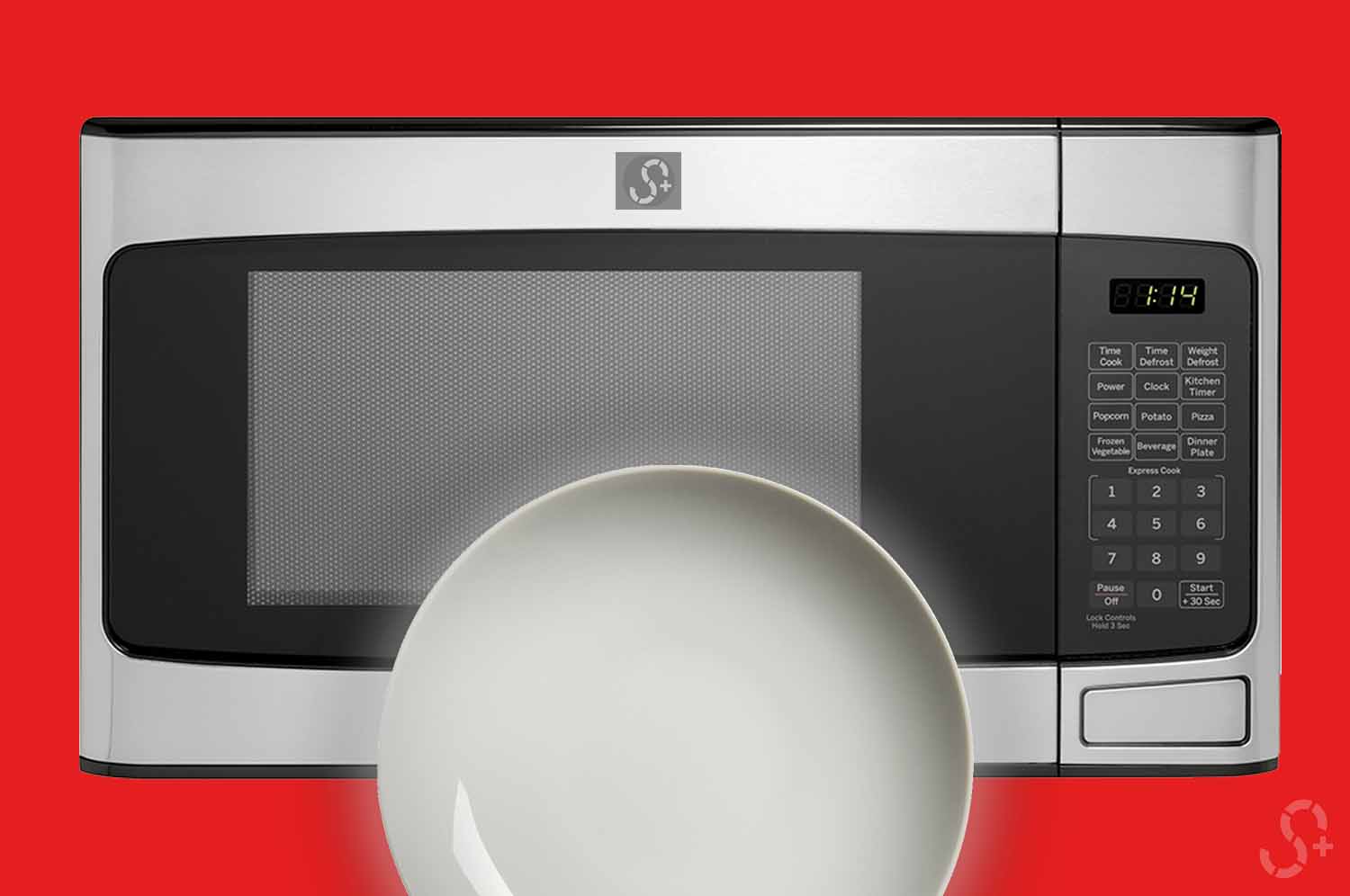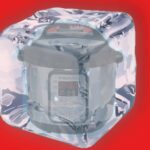Growing up, my mother would always be concerned about placing her colored or fine decorative porcelain dinnerware in a microwave. I didn’t know any better, all plates served the same purpose to me. If I needed to warm food up in the microwave, I would find any dish to place my grub on.
I still remember when my mother would give me an ear full about putting her decorative porcelain plates in the microwave. As I got older, I started wondering why I couldn’t put porcelain in the microwave. I wanted to know if there was truth to it or was it just an old wise tale. So I went hunting for the answer, and here’s what I found.
Generally, modern porcelain is microwave safe.
However, porcelain with decorative metallic trim or metal in the glaze can spark. Also, constantly heating empty plates can damage the magnetron of your microwave.
How to protect your porcelain in the microwave?
Since porcelain is created through a high heating process in the kiln, the pottery can withstand even the hottest temperatures of a microwave oven.
In fact, the kiln temperatures necessary to fire porcelain can get much, much hotter than any standard home microwave. There are some outliers to this rule, so go through our checklist before ending up with ruined family heirlooms:
Check the underside of the dish
One easy way to tell if your plate is microwave safe is to look under the dish.
Most porcelain from china will also indicate whether or not porcelain is microwave and dishwasher safe.
Does your china have detailing/patterns?
The only important thing to ensure is that your porcelain doesn’t have metallic detailing. If it doesn’t, you’re in the clear. Transfer whatever you want to heat up to a microwave-safe plate if it does.
Type of glaze
If a porcelain dish is not microwave safe, it’s not because of the porcelain itself. It’s either due to the detailing or metals in the glaze used. Any glaze containing lead is not microwave safe, as it will cause a brownish tint to develop on your porcelain ware.
No matter what you put into a microwave, it goes without saying to handle it cautiously.
Porcelain versus ceramic
Porcelain is part of the ceramic family and is one category of ceramics. Technically speaking, ceramic is any product made primarily from a nonmetallic mineral, such as clay, and fired at a high temperature.
You have porcelain, stoneware, earthenware, Bone China, and terracotta in the family.
Why does porcelain get hot in the microwave?
Porcelain absorbs small amounts of microwave energy that heats the polar molecules in the dinnerware.
Depending on how long you heat your food in the microwave, plates can become extremely hot, and cause injuries such as burns if you’re not careful.
As a rule of thumb, when heating anything in the microwave, keep oven mitts or a kitchen towel close by to hold hot plates that have been heated for 30 seconds or more.
Is it safe to put colored plates in a microwave?
Most modern plates are made with microwave-safe paints and are Okay to place in a microwave. Placing plates or cups with metals in the paint is not recommended.
Microwaves have become a staple in many homes in the world. So most manufacturers create all types of colorful microwavable dinnerware. If you’re in the market for new dinnerware, sites like amazon will indicate very clearly if plates are microwave safe.
If you have reservations about buying certain types of porcelain on amazon, you can rest assured because even the most colorful decorative porcelain dinnerware is microwave-safe.
What type of dinnerware does not get hot in the microwave?
A microwave-safe plastic plate will retain less heat than a traditional dinner in the microwave.
Many people across North America consume TV dinners and use splatter guards in the microwave. If you decide to use a plastic plate in the microwave, I would recommend BPA-free one.
The FDA states, “Bisphenol A (BPA) is safe at the current levels occurring in foods.”
The Cancer Society of Canada suggests only “use glass, ceramic and plastic containers and plastic wrap that are labelled as microwave safe”
Always avoid using Single-use containers in the microwave. If you still have concerns about using plastic dinnerware in the microwave, glass or ceramic is ideal. These options may not be as thermally optimal as plastic, but it’s the next best thing.
Why do some mugs get hot in the microwave?
Porcelain mugs contain polar molecules that heat up in the microwave, just like porcelain plates.
Porcelain mugs react the same as Porcelain plates. So always expect to encounter a hot mug when heating it for an extended time in the microwave.
I would like to credit Adam Ragusea YouTube channel for help in my research.








